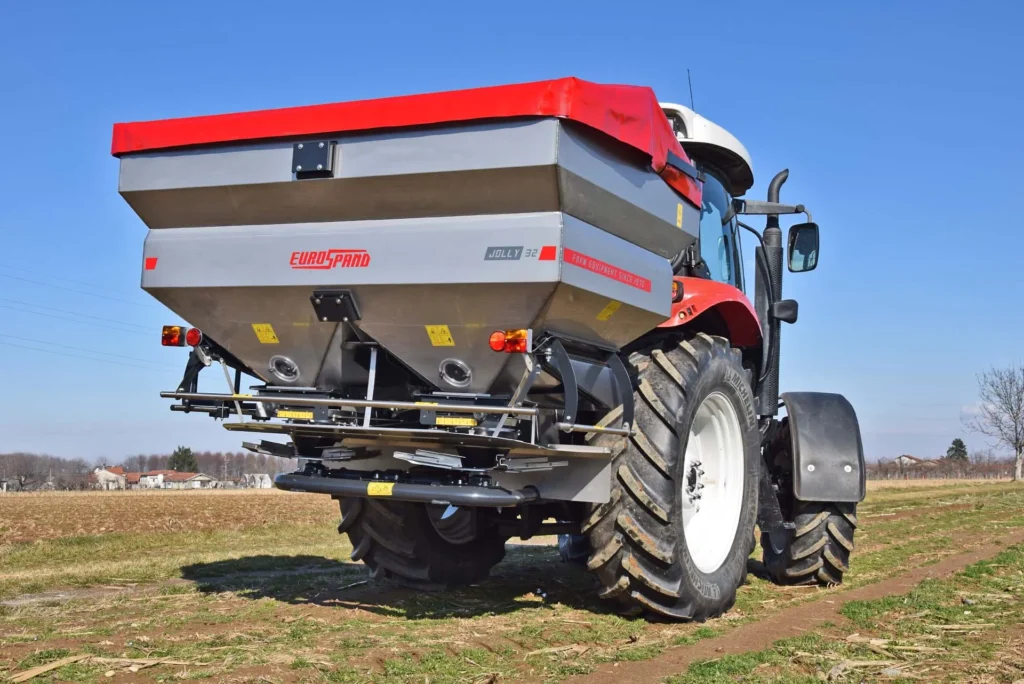
Fertilizer Spreader: Enhance Your Lawn’s Health Today
Discover the best fertilizer spreaders to ensure an even, healthy lawn. Find top-rated models, expert tips, and maintenance advice to keep your yard thriving.
Introduction to Fertilizer Spreaders
Fertilizer spreader is an essential equipment when it comes to landscaping hence used in spreading the fertilizer across the lawn to ensure adequate coverage of the nutrients. These devices come in different forms depending on the size of the lawn being maintained and the type of lawn it is /belongs to. Studying the possibilities of fertilizer spreaders’ works, you can improve your lawn in terms of health and visual presentation.
Fundamentally, fertilizer spreaders feature basic operational principles that entails spreading granules or liquid fertilizers on a given area. This process helps in feeding the lawn uniformly in a way that it does not allow any specific area to be overloaded with fertilizers and hence harm the lawn.
Broadcaster, drop, and hand-held are the main categories of the spreaders that distribute the fertilizers to the plants. Broadcast spreaders also known as rotary are more suitable for larger yards and large area spreading. They spread fertilizer in a wide manner in the field to ensure large areas are fully spread with the fertilizer. Drop spreaders, on the hand, are more accurate as they spread the fertilizer directly under the unit as you go; therefore ideal for small and complicated lawn space. Cranked broadcast spreaders have a small body that makes them easy to maneuver, best for localized application or small yards.
Applying fertilizer using a spreader is more effective than other methods of applying fertilizer by hand among them are as follows. First of all, these tools ensure proper spreading of fertilizers that is imperative for proper growth and health of the lawn. This normally leads to uneven growth of grass and in some cases some areas are over fertilized while others under fertilized. Secondly, fertilizer spreaders are very useful because they help to save a lot of time because the procedure is very fast regardless of the size of the area that has to be fertilized. Finally, communicating the evenness and discouraging wastage, spreaders help the lawn to be at its best, looking green all over.
The use of a fertilizer spreader is a good capital that results in time-saving, and enhancement of the health of the lawn besides boosting on the beautification of the compound. Knowledge about the various kinds of spreaders and their advantages make it possible for a person to select the proper gadget to use in creating a handsome lawn.

Choosing the Right Fertilizer Spreader for Your Lawn
Thus, it can be stated that choosing the right fertilizer spreader is critical when it comes to mowing maintenance of the lawn. The first criteria, which has to be defined to choose the appropriate equipment, is the size of the lawn. For smaller spaces, one may opt for handheld or drop spreaders for they are accurate and easy to use. For mid and large sized yards, a broadcast spreader will prove to be more effective because it is able to spread the grass thatch over a large area at one go.
Concerning the selection criteria, the capacity of the spreader must not be overlooked. Having the tank with more capacity also is less involving compared to having to refill as often as with a smaller capacity. Nonetheless, larger spreaders may be heavier as well as hard to maneuver, thus take a balance between capacity and usability according to the physical strength and ground conditions.
It is easy to use and it is even simpler for those who are newcomers to lawn care activities. Make sure that the spreaders have different options of adjustment, comfortable handles and simple directions on how to assemble them. This is also true with pneumatic tires incorporated in some models as these create easy movement over rough terrain.
There are, of course, certain limitations to it, and one of the first things that the unaided eye notices is that budget is definitely a very important factor. There are low-end as well as high-end models, with such features like edge guards and precision rate settings embedded in the high-end models But you can find some economical versions that will not have these frills yet make good work. Evaluating your lawn care requirements, decide on the amount of money that you can spend.
In order not to get confused when choosing the appropriate model it is useful to compare models and usage of their options. For example, Scotts Turf Builder EdgeGuard Mini Broadcast Spreader received high ratings as well as recognition due to the precise spreading process and customer-friendly design which received a high appreciation from those with small to medium sized lawns. However, there are models like the Earthway 2150 Commercial Walk-Behind Broadcast Spreader that can again be described as indestructible, with the ability to hold as much as 12 pounds of material at once, ideal for large estates.
Consumer feedback and specialist advise could be useful in a situation when one is trying to determine how well a given spreader works or how long it lasts. They are available on sites with massive customer reviews such as Amazon and Home Depot; various gardening forum or gardening site may contain expert reviews with different comparison.
All in all, different consumers will have different recommendations when it comes to the best fertilizer spreader to be used in the lawn exercising the given factors such as the size of the lawn, the capacity of the spreader, how easily you can use it, and the cost. Thus, with reference to these elements and in accordance with user feedback regarding particular models and the recommendations of gardening professionals, choosing an appropriate spreader will contribute to the improvement of your lawn’s condition.

How to Use a Fertilizer Spreader Effectively
Proper application of fertilizer is very important when it comes to the health of the lawn and its color. The first strategy to implement is equipment readiness. The first thing that one should do on the field is to makeadjustments to the spreader to make it to dispense the right amount of fertilizer. Calibration entails depends on the type of fertilizer to be spread and specific settings recommended by the companies. This step is very important in the distribution of nutrients in the lawn in order to fill blanks and come up with an even coverage.
Then, select the right type of fertilizer for the lawn so as to cater for the needs of the lawn. It also depends on the type of grass, the kind of soil that is in the compound and presence of any nutrient deficiency. Choosing a right fertilizer will help the lawn to become healthy an grow well.
After your spreader is properly calibrated and you decided on a particular fertilizer, it will be necessary to set the spread rate. This is often stated on the fertilizer pack and should be set on the spreader in relation to this rate. This setting determines the area for spreading fertilizer and this makes sure that there will not be overflow of fertilizer used in a certain area since it will destroy your lawn.
S tart up the application process by filling the spreader hopper with the right quantity of the fertilizer. There should be uniform distribution of the seeds; walk at a slow, steady pace to make sure the spreader is flat on the ground. Make sure to slightly overlap each of the passes in order to guarantee that there are no blind spots. It is advisable to lay the fertilizer in a cross hatch method to minimize compaction as you diagonally cross over the area after going through it in a straight line. This technique is useful in the attainment of equal dispersion.
Pay attention to such errors as overfertilizing, or not painting a portion that should be painted. The common mistake during fertilization is over-fertilizing ends up burning the lawn and under-fertilizing results in an uneven distribution of the grass. Do not use more of the product than is recommended by the manufacturer; ensure to follow the usage guidelines as provided by the manufacturer.
In order to avoid rust as well as accumulation of fertilizer on the spreader, clean the spreader after use. This means that one should make sure to properly store the spreader in a place that is safe from moisture to increase its durability. Faulty checkups and repairs such as oiling the moving parts and looking at the general health of the spreader will guarantee its effective functionality in the future.
With the help of these instructions and by observing important precautions to avoid polluting the environment, you can utilize your fertilizer spreader to attain a green and healthy lawn. Preparation before spreading, spreading the fertilizer, and correctly maintaining the spreader will assist in increasing the effectiveness of your fertilizer and the quality of your lawn.

Conclusion and FAQs
To sum up, the use of a fertilizer spreader is one of the basics to have a perfect green healthy grass. Uniform distribution of nutrients allows your grass to pick up the balanced nutrients in right proportions that are needed for its growth. Out fitting yourself with a proper fertilizer spreader really benefits your lawn work in a way that makes it easier to manage. In addition to emphasizing regular care of the lawn, you are taking an essential step to increase the value of the territory for yourself.
Below, we address some common questions and concerns about fertilizer spreaders to help clear any remaining doubts you may have:Below, we address some common questions and concerns about fertilizer spreaders to help clear any remaining doubts you may have:
FAQs
How often should I fertilize my lawn?
On this issue you need to know the frequency of fertilizing your lawn depends on the type of grass, the condition of the soil and type of fertilizer to be used. Thus, the ordinary lawns should be fertilized about three to four times a year. One should ensure they adhere strictly to the fertilizer recommendations given on the products’ packag.
When is the best time of year to spread fertilizer?
The appropriate seasons in which you should fertilize your lawn are the non-dormant periods of the year for the grass species, which are spring and autumn. During spring, fertilization allows the growth of the plants after the harshest season which is winter while during the autumn, it prepares the lawn closer to the winter season. Some types of fertilizers should not be applied in either very hot or dry weather because these conditions can endanger the lawn.
What should I do if my fertilizer spreader is not distributing evenly?
First of all, assure the spreader is adjusted to the appropriate recommendations, which are provided by the manufacturers. Examine the available channels for any form of hindrance, or mechanical problem that can hinder the distribution. Periodic checks and cleaning and lubrication of this component will also go along way in ensuring even distribution.
What is the environmental impact of using fertilizers?
As much as fertilizers are important for the lawn, there are cases where the application may be in excess and this will cause the nutrients to be washed down the drain affecting water bodies in the vicinity. Select slow release fertilizers, observe the recommended amounts time of applying fertilizer, and incorporate use of organic fertilizers into your lawn. The appropriate utilization of the chemicals and the right time for applying them also helps inhibit instances of runoff while improving the lawns’ health.
By addressing these common questions, we hope to provide you with the knowledge and confidence needed to effectively use a fertilizer spreader and maintain a vibrant, healthy lawn. Investing in the right tools and understanding the best practices will ensure long-term success in your lawn care endeavors.
About Lawn Movers Guide
Interesting Posts


Lawn Aerator | Improve Your Lawn’s Health & Appearance

Manual Lawn Aerator: Improve Your Lawn’s Health Easily

Pruning Shears: Top Quality Garden Pruning Tools


Affordable Garden Shears Quality Pruning Tools Online
Twenty years from now you will be more disappointed by the things that you didn’t do than by the ones you did do.
- Mark Twain Tweet

Lawn Aerator | Improve Your Lawn’s Health & Appearance


Fertilizer Spreader: Enhance Your Lawn’s Health Today
